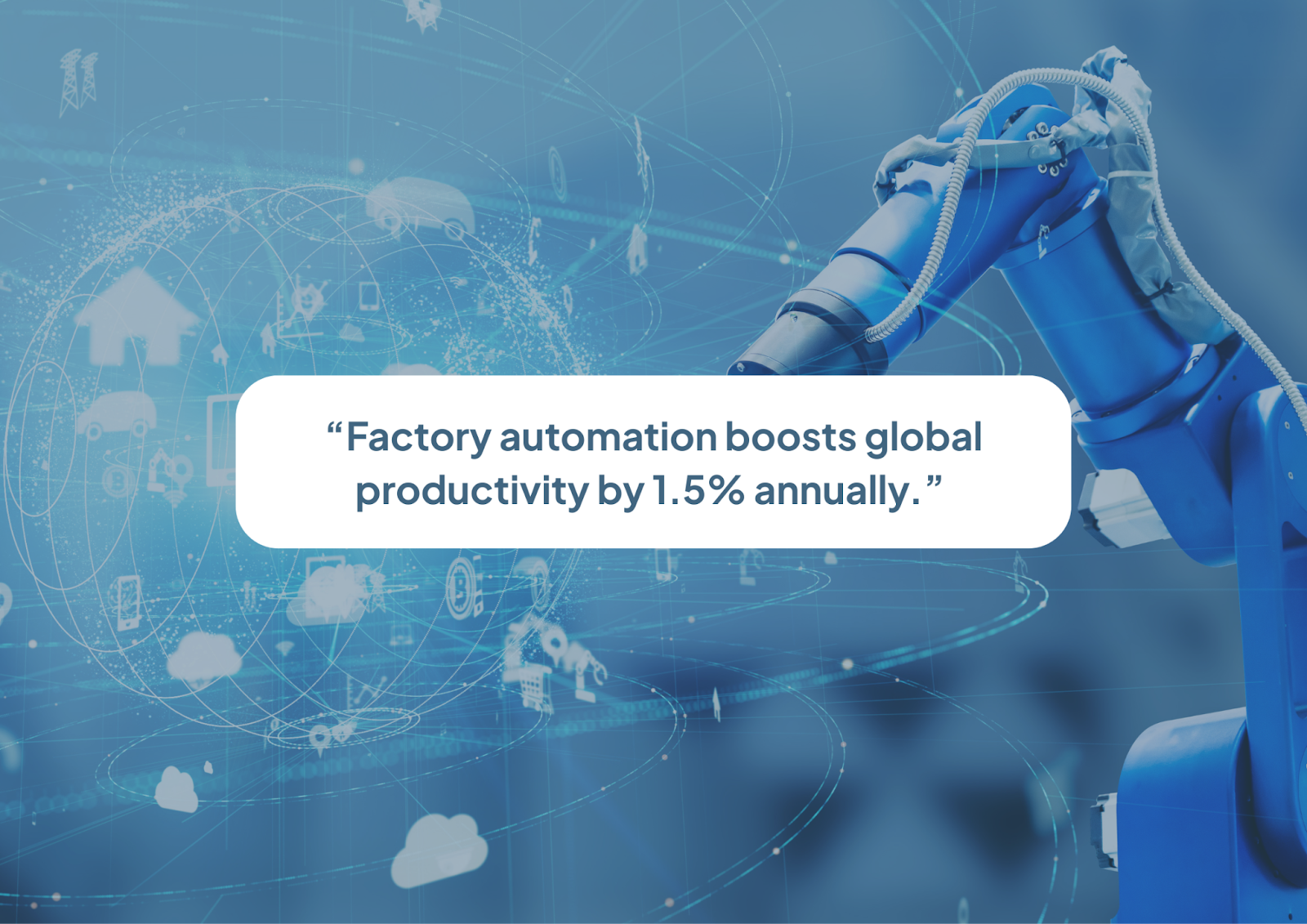%20(21).png)
For More Information
Contact us!.png)
%20(37).png)
Dipesh Patel is the President & CEO of DP Gayatri, partnering with OEMs and Contract Manufacturers to automate and scale operations. A seasoned management consultant and graduate of the UofM Carlson School of Management, he brings strategic leadership to a portfolio of manufacturing and automation companies delivering factory automation, contract assembly, facility relocation and expansion, and supply chain localization across the U.S. and Latin America.
The evolution of industrial technology has completely transformed the manufacturing landscape through Factory automation, enabling systems to streamline operations, boost efficiency, and enhance scalability like never before. By integrating advanced technologies such as IoT, AI, and robotics, factories are now capable of achieving unprecedented levels of precision and productivity.
Central to this transformation is the Industry 4.0 automation pyramid, a well-defined framework that outlines the layers of automation within manufacturing processes, from the shop floor to enterprise-level decision-making. But what exactly are the five levels of automation within this pyramid, and how do they work together to optimize factory operations for maximum efficiency and flexibility? In this article, we will break these down, explore their roles in the manufacturing ecosystem, and explain how they integrate to create smarter, more adaptive production environments.
The layer model of automation is a structural hierarchy often referred to as the Industry 4.0 automation pyramid. It maps out the progression of automation in factories, starting from the most granular field-level operations to overarching business planning. Each level in the pyramid builds on the previous one, promoting connectivity, efficiency, and real-time data integration.
These layers, aligned with the Industry 4.0 automation pyramid, enable better decision-making and operational insight by ensuring seamless communication between processes.
Breaking down the mid-levels of automation reveals how manufacturing operations are stabilized and optimized:
This stage features programmable devices like PLCs, which process sensor data and make decisions in milliseconds. Example: A PLC controlling a conveyor belt’s speed based on weight sensors.
SCADA (Supervisory Control and Data Acquisition) systems monitor real-time data to visualize processes and generate alerts. Example: A SCADA dashboard showing temperature control in a food processing plant.
MES bridges the gap between production and business operations, tracking execution and ensuring that machines and schedules align with outcomes. Example: An MES analyzing whether production meets quality standards.
Together, these levels foster smart factory functionality, transforming conventional factories into interconnected ecosystems.

When discussing the levels of automation, it’s important to identify key types of automation and their relevance in factory operations:
1. Fixed Automation: Machines designed for repetitive tasks. Example: Automotive assembly lines.
2. Programmable Automation: Systems that can be reprogrammed for flexibility. Example: CNC machines.
3. Flexible Automation: Capable of automatic adjustments to handle varying requirements. Example: Robotic arms in manufacturing.
4. Integrated Automation: All systems connected digitally for data sharing. Example: Fully integrated IoT-controlled factories.
5. Intelligent Automation: Enabled by AI and IoT to make autonomous decisions. Example: AI-powered predictive maintenance systems.
Each type plays a role at different hierarchical levels, enhancing the functionality of factory operations.
Every automated system, regardless of its type or level, relies on five essential components for functionality:
1. Power Source: Powers machines and sensors.
2. Program of Instructions: Directs tasks and workflows.
3. Control System: Executes and adjusts operations.
4. Actuators: Convert control signals into physical motion.
5. Sensors: Gather data from the environment.
The 10 levels of automation model may provide a more granular view, but the core functions remain tied to these essentials.
Understanding the advantages and disadvantages of automation is crucial to evaluating its role in modern manufacturing:
Despite these challenges, integrating automation at various levels results in improved ROI, heightened flexibility, and scalable manufacturing.
Considering automation for your operations? Explore how Factory automation systems from DP Gayatri can transform and optimize every level of your manufacturing process- from streamlining production lines to improving efficiency and reducing errors. With cutting-edge technology and tailored solutions, we help you stay competitive in a fast-evolving industry. Visit our Factory automation page to learn more and discover how we can support your business.
